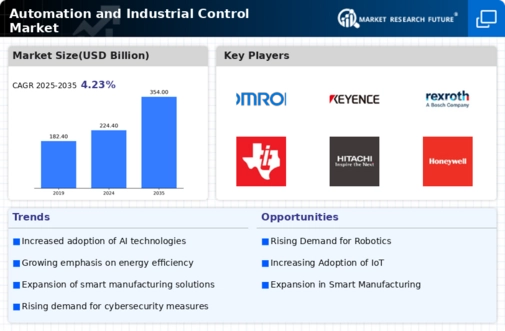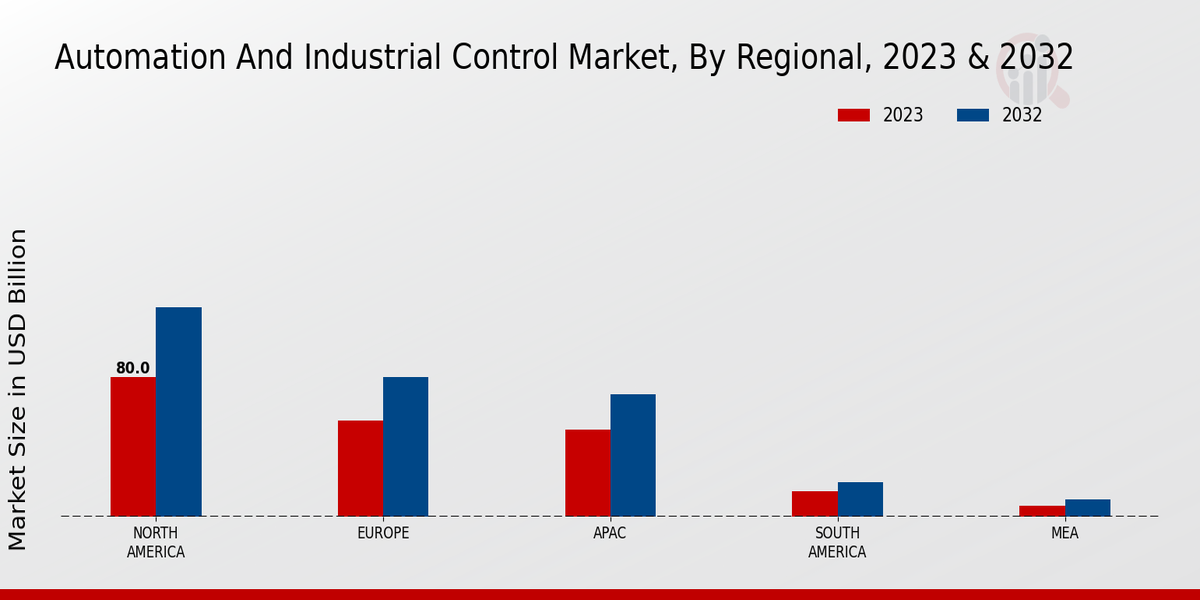Market Growth Projections
The Global Automation and Industrial Control Market Industry is projected to experience substantial growth, with estimates indicating a rise from 224.4 USD Billion in 2024 to 354.0 USD Billion by 2035. This growth reflects a compound annual growth rate (CAGR) of 4.23% from 2025 to 2035, driven by various factors such as technological advancements, increased demand for process automation, and a focus on energy efficiency. The market's expansion is indicative of the broader trends in industrialization and modernization across global economies, highlighting the critical role of automation in shaping future industrial landscapes.
Technological Advancements
The Global Automation and Industrial Control Market Industry is experiencing rapid technological advancements that enhance operational efficiency and productivity. Innovations such as artificial intelligence, machine learning, and the Internet of Things are transforming traditional manufacturing processes. For instance, the integration of AI in predictive maintenance can reduce downtime by up to 30 percent, thereby increasing overall equipment effectiveness. As these technologies become more accessible, industries are likely to invest heavily in automation solutions, contributing to the projected market growth from 224.4 USD Billion in 2024 to 354.0 USD Billion by 2035.
Global Supply Chain Optimization
The Global Automation and Industrial Control Market Industry is benefiting from the need for global supply chain optimization. Companies are increasingly adopting automation to enhance supply chain visibility and responsiveness. Automated inventory management systems can reduce stockouts and excess inventory, leading to improved cash flow. For instance, organizations that implement automated supply chain solutions report a 25 percent improvement in order fulfillment rates. As global trade continues to evolve, the demand for automation in supply chain processes is likely to drive market growth, reinforcing the industry's importance in modern commerce.
Increased Focus on Energy Efficiency
The Global Automation and Industrial Control Market Industry is increasingly focused on energy efficiency as organizations seek to reduce operational costs and environmental impact. Automation technologies enable real-time monitoring and control of energy consumption, leading to substantial savings. For example, smart grid systems can optimize energy distribution, potentially reducing energy costs by up to 15 percent. As sustainability becomes a priority for businesses, the demand for energy-efficient automation solutions is expected to rise, contributing to the market's growth trajectory over the next decade.
Rising Demand for Process Automation
The Global Automation and Industrial Control Market Industry is witnessing a rising demand for process automation across various sectors, including manufacturing, oil and gas, and pharmaceuticals. This demand is driven by the need for increased efficiency, reduced operational costs, and improved product quality. For example, in the chemical industry, automated systems can enhance production rates by 20 percent while minimizing human error. As industries strive for greater competitiveness, the market is expected to grow at a CAGR of 4.23% from 2025 to 2035, reflecting the ongoing shift towards automated processes.
Regulatory Compliance and Safety Standards
The Global Automation and Industrial Control Market Industry is significantly influenced by stringent regulatory compliance and safety standards. Governments worldwide are implementing regulations that require industries to adopt automated systems to ensure safety and environmental sustainability. For instance, the introduction of the ISO 9001 quality management standard has prompted many organizations to automate their processes to meet compliance requirements. This trend not only enhances safety but also drives market growth, as companies invest in automation technologies to adhere to these regulations, further solidifying the industry's expansion.
























